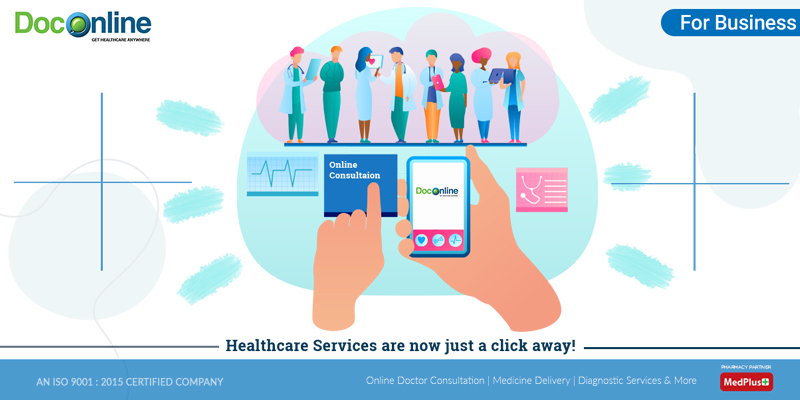Subscription Based Healthcare: Transforming the Means We Consider Health
Subscription Based Healthcare: Transforming the Means We Consider Health
Blog Article
The Surge of Subscription-Based Health Care and Its Effect On Patient Care
As healthcare evolves, the subscription-based version is acquiring traction, guaranteeing to change client care by using predictability and accessibility. These versions, which bypass typical insurance, could redefine the patient-doctor dynamic, stressing precautionary and individualized treatment. As with any development, they offer difficulties, specifically concerning equitable access for all socioeconomic teams. The potential for these designs to reshape health care delivery raises pressing questions concerning their long-lasting sustainability and inclusivity. Are these registration services the future of health care, or do they take the chance of leaving susceptible populations behind? The intricacies of this change warrant a more detailed assessment.
Understanding Subscription Medical Care Versions
Understanding the principle of membership medical care versions entails checking out a transformative strategy to clinical services that emphasizes cost and ease of access. These models, often described as straight medical care (DPC) or concierge medicine, have emerged as cutting-edge options to typical fee-for-service healthcare systems. Subscription healthcare permits patients to pay a set month-to-month or yearly charge for a defined set of clinical services, which might consist of limitless office check outs, regular examinations, and basic lab examinations, without the requirement for typical insurance coverage payment.
The structure of subscription health care models is developed to streamline individual care by getting rid of third-party payers and complex invoicing codes, consequently lowering administrative burdens. Health care service providers can focus a lot more on person care, promoting more powerful patient-provider connections. This version also promotes preventative care by motivating routine gos to, as the monetary challenge of per-visit fees is eliminated.
The membership design typically equips doctor to take care of smaller person panels, enabling for more personalized care. It straightens monetary incentives with individual wellness outcomes, as service providers are motivated to keep individual fulfillment and health. In general, understanding membership medical care models needs acknowledging their possible to reshape just how care is provided and accessed.
Benefits for People and Carriers

With a stable earnings stream, healthcare specialists can commit even more time to each client, leading to a more tailored and detailed care experience. The emphasis on preventative treatment within membership plans can lead to better individual end results and decreased lasting health care expenses.
Problems and difficulties
While subscription-based health care designs existing many benefits, they likewise come with a collection of difficulties and issues that have to be dealt with. This raises honest concerns about equitable accessibility to medical care solutions.
Financial sustainability of subscription-based designs is another worry. Companies should balance the fixed income from memberships with the variable costs of healthcare solutions, which may vary due to unexpected medical needs. This can create pressure to restrict services or boost fees, potentially influencing person complete satisfaction and care quality.
In addition, regulative oversight of subscription-based medical care designs is still developing. The absence of standardized structures can lead to inconsistent solution high quality and responsibility, making complex efforts to guarantee patient protection. The integration of technology-- commonly a foundation of these versions-- increases concerns about information privacy and protection, as delicate person information might be at risk to breaches. Dealing with these difficulties is vital for the fair and effective application of subscription-based health care.
Impact on Patient-Doctor Relationships
One considerable impact of subscription-based medical care versions on patient-doctor relationships is the potential for improved continuity and personalized care. By embracing a registration model, medical professionals can handle a smaller sized patient panel, enabling more committed time with each person. This increased accessibility cultivates a deeper understanding of a client's case history, way of life, and choices, allowing more tailored treatment strategies and treatments.

However, it is very important to recognize that while subscription-based designs might profit those that can afford them, they could accidentally broaden medical care variations. Individuals that are incapable to join these models might experience lower access to personalized care, potentially affecting their connections with doctor. Hence, while the membership model provides appealing advantages for patient-doctor relationships, it additionally poses challenges that require to be addressed to ensure fair health care access.
Future of Healthcare Gain Access To

The role of modern technology can not be forgotten in this transformation. Telemedicine platforms and digital health documents facilitate smooth interaction between clients and medical care service providers, damaging down logistical and geographical barriers. In addition, innovations in man-made intelligence and data analytics can further personalize treatment by anticipating person requirements and optimizing therapy plans.
However, the future of healthcare accessibility additionally provides challenges, such as making sure equity throughout various socio-economic groups. Policymakers and medical care carriers need to team up to connect the electronic divide, making sure that subscription-based models stay comprehensive and economical. As these systems grow, they hold the promise of making medical care much more accessible, efficient, and patient-centric.
Conclusion
Subscription-based healthcare designs are improving client treatment by giving a stable price framework and improving ease of access. These designs enhance patient-provider partnerships with personalized care and routine brows through, emphasizing preventative health. Despite these advantages, obstacles such as accessibility problems for low-income populations and the need for equitable healthcare services linger. The increase of subscription-based healthcare urges positive individual engagement, which has the prospective to improve person end results and contentment, indicating a transformative change in healthcare delivery.
As health care progresses, the subscription-based design is acquiring traction, assuring to transform client care by offering predictability and availability.Subscription-based medical care models supply distinctive advantages her latest blog for both people and carriers, improving the total healthcare experience.As healthcare systems develop, the future of medical care access often pivots on the combination of ingenious designs and technologies.Subscription-based healthcare designs are improving client treatment by offering a steady price framework and improving availability. The increase of subscription-based healthcare urges positive patient engagement, which has the potential to boost person results and fulfillment, indicating a transformative change in healthcare delivery.
Report this page